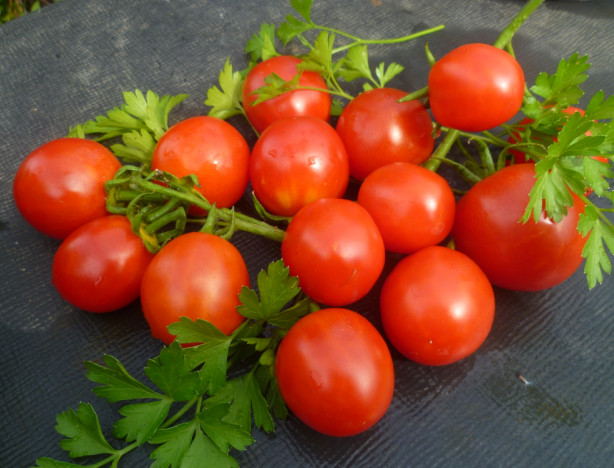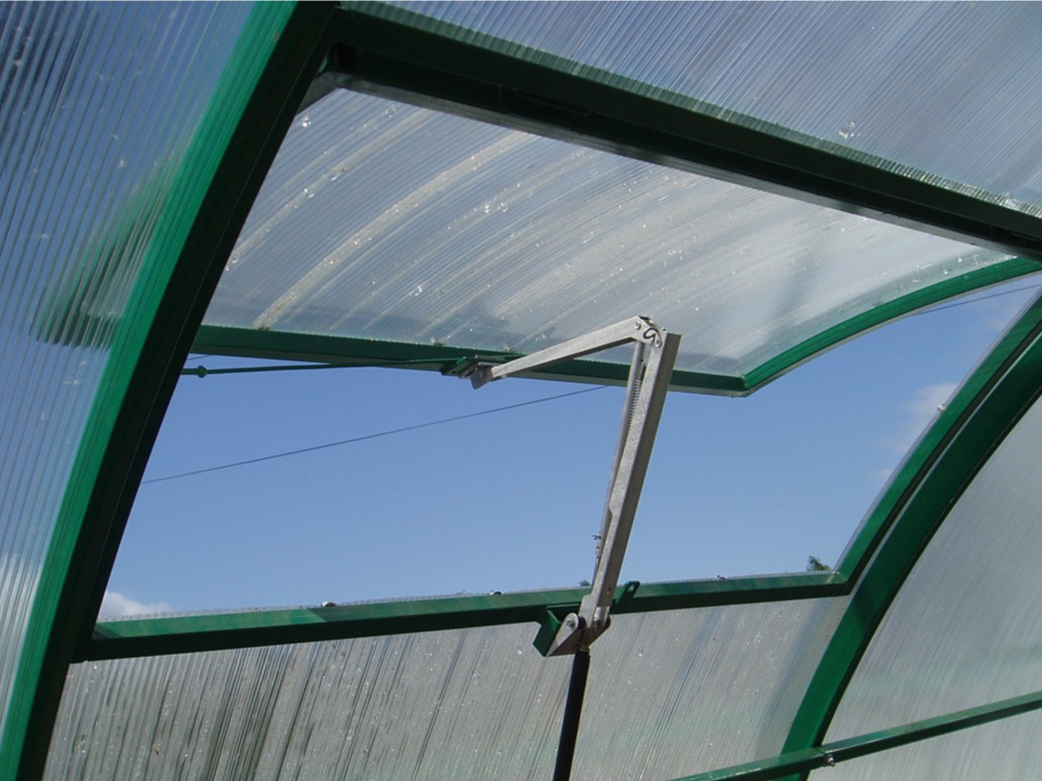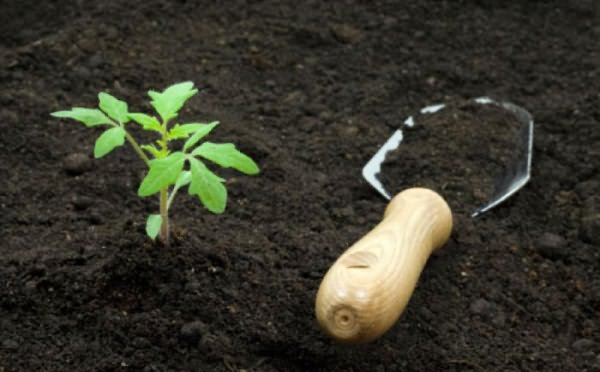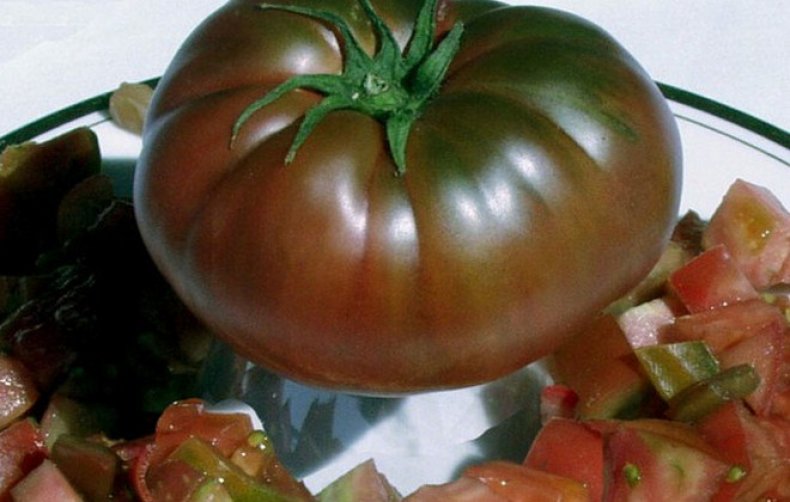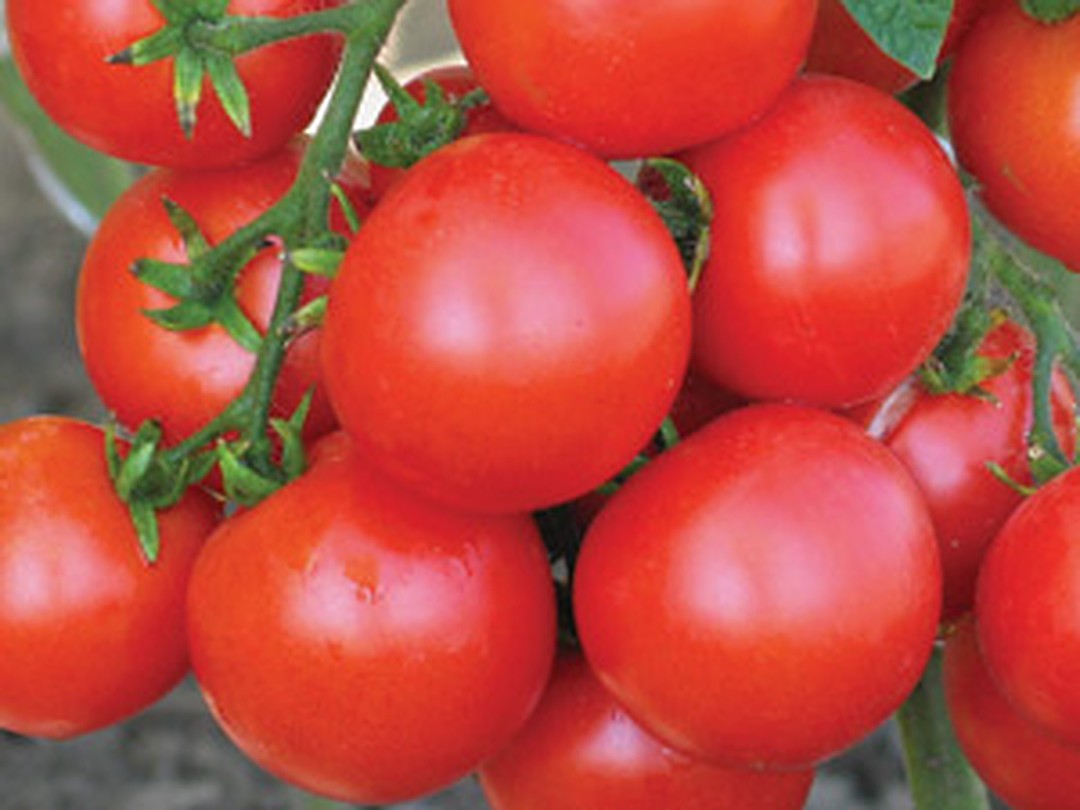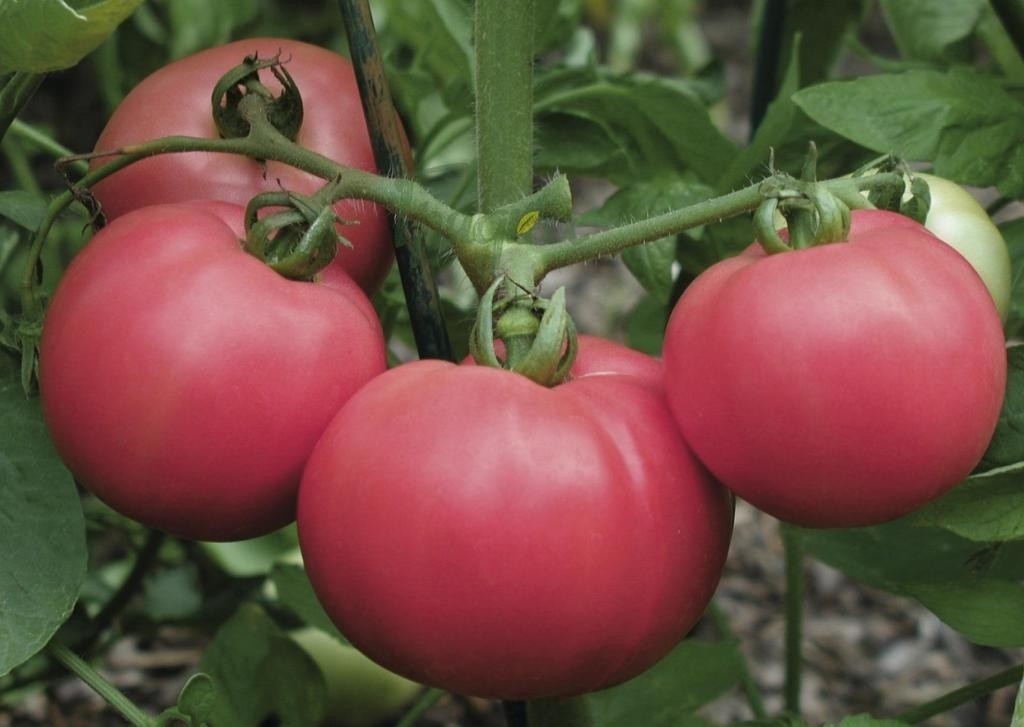Content:
Tomato Stolypin is a young variety included in the Russian State Register of Breeding Achievements since 2012. An early ripe variety is available for cultivation in any region. The plant is cold-resistant, suitable for growing in the open field and under film shelters, the period from germination to fruit ripening is 95-105 days.
Variety characteristics
Tomato is a determinant type of growth, which means limited stem height, a feature suitable for outdoor cultivation. Tomato independently ends its growth at a height of 50-60 cm, with a flower brush. The main ripening of fruits on the clusters below the topmost. Medium-sized leaf, dark green. The inflorescence is simple. The peduncle is articulated. The plant needs to be tied up with the formation of a bush.
The color of the unripe fruit is light green, without a spot at the stalk. Ripe fruits are bright red, compact, even, with excellent taste. The tomato has a slightly elongated oval shape with a spout ending.
The number of nests is 2-3, with a low seed content, the skin is dense. Fruit weight - 90-120 g, does not crack.
The yield of marketable fruits in film shelters is 8.0-8.5 kg / sq. m.
Purpose - salad and whole-fruit canning.
Agricultural technology varieties
Stolypin tomatoes are early and cold-resistant, which is suitable for growing them in a seedless way.
Sowing in open ground is carried out with dry seeds, without pre-sowing preparation. The width between the planting lines is 50 cm. The soil for sowing in May should be moist and warmed up to 14-15 ° С. A mini-greenhouse is made of metal arcs and covering materials on the garden bed. The seedlings are kept under cover until the end of the spring frost. For planting, the device is favorable for tomatoes in warm high beds.
In open ground, seedlings appear later than in a greenhouse or room. Tomatoes are thinned out several times as they grow, leaving in the final version 35-40 cm gaps between plants.
Tomatoes are watered, depending on the amount of precipitation, when the soil dries up. Obligatory loosening is performed, which can be compared to dry irrigation. Tomatoes respond well to hilling and mulching. Such techniques protect the bottom of the stems from adverse climatic and atmospheric phenomena, especially in open ground conditions.
With pre-planting soil fertilization, you may additionally need one organic fertilizing during the period of fruit formation. An example of organic feeding is chicken manure diluted with water in a ratio of 1:15.
Tomatoes are undersized, but require a garter and bush formation. The leaves that are below the ripening fruits are cut off several pieces a week. The leaves are involved in the process of delivering moisture and nutrients to the fruits, therefore, only used specimens are removed. The top of determinant varieties is not torn off, because it ends with growth, by mistake breaking off the last flower brush, you can be left without a crop.
With a seedless planting method, Stolypin tomatoes go through all stages of development faster than plants in a greenhouse, and their fruiting period becomes longer. But the yield of tomatoes in the open field is lower than in greenhouses. Closer to autumn, to prolong the ripening of tomatoes on the bush, they are half covered in arcs with a film.
Pros of the seedless way:
- plants become more resistant to temperature changes and various diseases;
- seeds show high germination;
- tastier fruits;
- reduction in labor costs for growing;
- do not require allocation of places for seedlings.
Stolypin tomatoes grown through seedlings are also transplanted into open ground. For growing seedlings, an early ripe variety is sown in seedling containers 45-55 days before the date of the proposed planting in the ground, adding one week for germination. The variety allows you to collect your own seeds.
Seeds for planting are sorted by choosing healthy, full-bodied specimens. The seed can be disinfected in a solution of dark potassium permanganate for 20 minutes. Seedling boxes are covered with a fertile mixture consisting of garden soil and humus. To enrich the garden land, mineral complex fertilizers are used. The seeds are laid in the grooves to a depth of several centimeters. The seedling container is covered with foil and placed in a dark, warm place for several days. When the main number of shoots loops appears, the film is removed and the boxes are placed in a bright place. For 4 days, the temperature is lowered for the development of the root system.
Seedlings require 12 hours of lighting per day. It is not recommended to plant seeds in winter with small daylight hours. In cloudy weather, the seedlings are supplemented with special lamps. When the first true leaves appear, the seedlings dive into looser individual containers. When transplanting, it is important to injure the roots as little as possible and transfer the seedlings along with the earthy clod.
The first inflorescence is formed above 5-6 leaves. It is considered normal and even preferable to form a flower brush before planting in the ground.
A week before planting, the seedlings are hardened for faster adaptation in open ground or greenhouses. For hardening, tomatoes are taken out to a cooler place or windows are opened, gradually increasing the time spent at a low temperature up to a day. When hardening, it is important to monitor the temperature and not leave seedlings on the balconies during night frosts.
The soil in greenhouses is prepared several weeks before the seedlings are planted. When growing tomatoes in one place annually, the soil should be constantly renewed. Pests hibernate in the soil left behind, and the risk of disease increases. To renew the soil, garden soil is mixed with humus in equal parts. Planting requires moist soil, so it is pre-watered over the entire area and loosened.
The greenhouse should be located from east to west, in a location where all tomatoes will receive sufficient light. The most important is sunlight, which comes from the east side. Receiving the sun's rays only at sunset, plants will lose in yield and taste.
Tomatoes share the same pests and diseases with crops such as potatoes, eggplants, and peppers.
Stolypin tomatoes can be planted after cucumbers, but for this the soil must be fertilized, a mixture of turf soil with humus and peat is suitable.
For transplanting seedlings in the soil, holes are made with the calculation of the location of 4-5 plants per 1 sq.m. Tomatoes absorb many nutrients during the growing season. Fertilizers can be applied both during the general preparation of the land for planting, and separately into the hole. For fertilization, it is convenient to use a complex composition of mineral fertilizers, for example, nitroammophoska.
The hole is made about 25 cm deep, watered, fertilized, sprinkled with earth, mixed to form a slurry. Plants are transferred to the hole prepared in this way, preferably with a closed root system or, trying not to damage the roots.The root must combine with moisture, the seedling is covered with practically no deepening. The soil around the planting is slightly compressed.
Determinant varieties do not require complex bush formation, but a garter will be required to support the weight of the fruit. Supports are pre-installed for the garter. Bushes are tied up, without pinching, with a wide soft ribbon.
Further care consists in watering, loosening, mulching, compulsory airing of tomato planting.
Advantages and disadvantages of the variety
Tomato grows well outdoors, and given its limited height, it is impractical to use it in greenhouses where it can be shaded. The advantages of the variety are that it can be planted in open ground by direct sowing, which does not require time-consuming growing of seedlings. Produces high quality early and high yield of sweet tomatoes. Tomatoes are not very susceptible to late blight. A distinctive feature of the variety is the resistance of the fruit to cracking, which, when ripe on a bush and when preserved as a whole, gives even, smooth fruits.
In the characteristics and description of the Stolypin tomato variety, it is indicated the possibility of its cultivation in the regions of risky agriculture. The culture is cold-resistant and early maturing. Determinant varieties are distinguished by high survival rate on the soil. Medium-sized fruits are well suited for a variety of canning.
